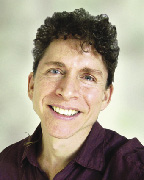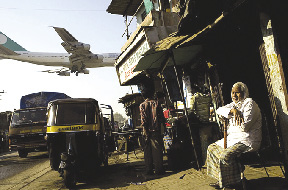India is emerging as a superpower - both in terms of its human and knowledge capital, and in terms of its economic potential. Many real estate professionals are looking to the subcontinent's rapidly growing cities for development opportunities.
But to successfully profit in India's urban boom, developers must understand not only which cities are primed for development, but more importantly, the interplay between two very different faces of India's cities.
Professor Rahul Mehrotra, associate professor of architectural design at MIT School of Architecture and Planning, explored that relationship on Friday, September 26th, as a part of the MIT Center for Real Estate's Graduation & Alumni Reunion Weekend.
In a talk entitled "Urban India: Questions for Urban Design," Mehrotra introduced the "kinetic city" as a key ingredient to any urban development venture.
The Current Urban Migration
Approximately 285 million Indians (27% of the billion-plus population) currently live in cities, but the population is migrating from rural to urban settings in record numbers.
In a recent annual budget, the country's finance minister Chidambaram Palaniappan made history by articulating a vision for India's future in which 85% of the population would eventually live in urban settings. Such a vision would demand a staggering level of development, and the potential for great rewards in terms of investment.
Professor Mehrotra divided Indian cities into three tiers - based on their growth potential - to better target real estate development opportunities. "The first tier is the megacity," Mehrotra said, "which includes 4-30 million inhabitants." India has seven, beginning with Mumbai (Bombay), Kolkata (Calcutta), and Delhi.
The next Mehrotra called "the metros," cities with 1Â-4M people. "For real estate, this is where it's happening now. These are our centers for information technology. Pune, Surat, Kanpur, Jaipur... this is where the action is."
The last tier includes cities of 100K-1 million people. "We have 393 of these, all of which in the next 10 years will have populations of one million plus," Mehrotra said. "Trillions of dollars is being poured into infrastructure in these cities. This is the time bomb India is sitting on. The future is here."
The "Static City" Versus the "Kinetic City"
Like the Hindu god Ganesh, usually depicted as half human and half elephant, cities in India have two aspects. To successfully build in India, developers must understand their interplay.
The static city is the part traditionally thought of as the built environment - "the buildings and structures that architecture deals with," Mehrotra said.
The kinetic city is the part that is in constant flux, that part that is "making and remaking" any given city. "The kinetic city is not codified as the static city is," Mehrotra said. "In fact, it's in opposition to the static city, and not recognizing that fact can create problems."
The kinetic city is similar to shanty towns and squatter settlements in many developing countries. "But what's different in India is how temporary and permanent structures occupy the same space," Mehrotra said. "The result is both glamour and displacement."
"If you poke your head into one of these dwellings" - which might have walls and roof of corrugated metal and sheets of scrap materials - "you might easily see a child logging onto the internet. It may be cramped inside, but looks decidedly middle-class."
Using his home city of Mumbai as an example, Mehrotra offered a local public cricket field as "a perfect demonstration of the kinetic city." (Like most large Indian cities, Mumbai has very little public or open space, and what is available must be used creatively.)
The day begins with a cricket match at 6:00 a.m. After the match, the park is transformed over the course of the day into an elaborate and sprawling wedding site. Intricate temporary structures are built over several acres, creating the feel of different neighborhoods within the borders of this "instant city."
The wedding celebration reaches its peak late at night, and immediately afterwards, this enormous community is disassembled. In time for the next day's 6:00 a.m. cricket match, no trace of the wedding remains. "Architecture is not the spectacle of the city," Mehrotra said. "Or rather, it is the spectacle that leaves no memory."
Conflict and Opportunity
A vast country with rapidly developing cities, India is also a country rich in history and unique cultural norms. Models for development that work in other parts of the world sometimes simply don't work in India. For example, it is all but impossible to convert rural land into urban because of cultural resistance. "And often, that very real resistance is simply not perceived - both by NGOs and by developers," Mehrotra said.
Real estate developers face a special disadvantage in India because they do not have a historical or traditional niche in the society. The major developers only go back three generations. And until recently, development has not been a part of the public discourse; it was done quietly, and with little public engagement.
A prudent developer will recognize the dynamic interplay between the static and kinetic city, and will seek creative ways to engage the two. For example, a possible "point of intersection" might involve a slum redevelopment project employing a mixed-income style of approach that houses 50% of the slum dwellers in half of the development.
"All the hot property is slum property," Mehrotra said. "This is the new land coming into the market. It offers the greatest conflict, but also the greatest opportunity." The transformation of shanty towns and streets teeming with small shops and squatter vendors will require recognition of their unique place in the culture, and a willingness to creatively engage the permanent and the temporary. "The kinetic city is the temporal articulation of space," Mehrotra said. "This is exciting to a student of real estate.
Michael Mack is an affiliate writer for the MIT Center for Real Estate, Cambridge, Mass.










